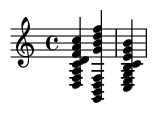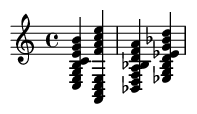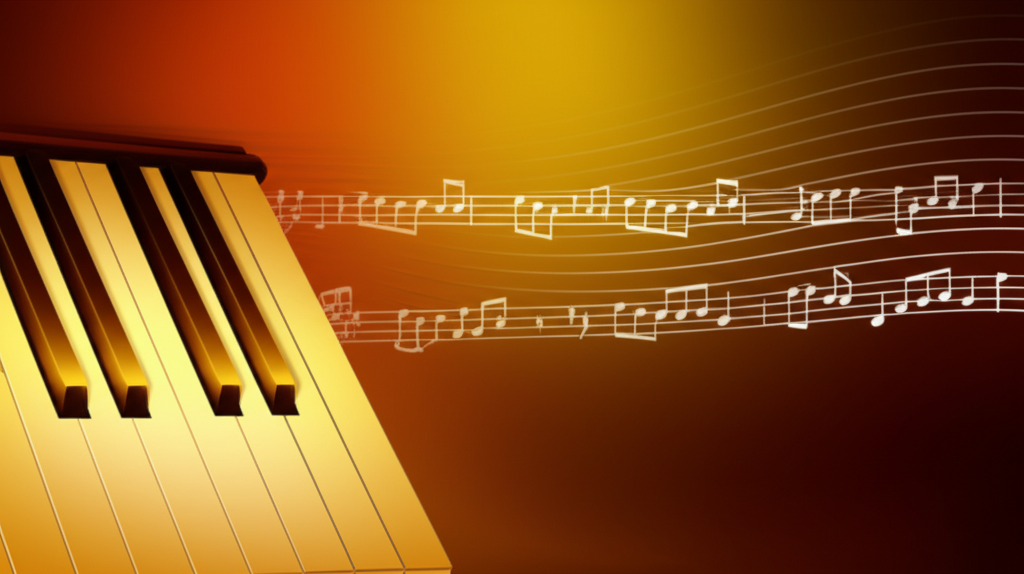Summary:
The major seventh chord elevates the basic major triad with a rich, colorful extension: the major seventh interval. This creates a sophisticated, dreamy sound that is foundational to jazz, bossa nova, and contemporary R&B. While providing a stable tonic function, its unique harmonic texture adds emotional depth and elegance, making it an essential tool for any modern musician.
Keywords:
Major seventh chord, maj7, Δ7, jazz harmony, music theory, sophisticated harmony, extended chord, major seventh interval, tonic function, bossa nova, chord progressions, chord voicing, ear training.
Introduction: What is a Major Seventh Chord?
The major seventh chord is one of the most beautiful and evocative harmonies in modern music. By adding a major seventh interval to a standard major triad, it transforms a simple, bright sound into something lush, contemplative, and sophisticated. Once considered a dissonance in the Classical era, composers like Debussy began exploring its coloristic possibilities, paving the way for its adoption as a cornerstone of jazz harmony.
Unlike the tense dominant seventh chord, which strongly pushes for resolution, the major seventh chord provides a feeling of restful stability while adding complex emotional color. This dual nature makes it the perfect choice for a tonic (home) chord in jazz, and a go-to sound for adding harmonic interest in pop, R&B, and film scores.
Structure and Construction
A major seventh chord is a four-note chord (a "tetrad") built from a specific formula of intervals above the root note. It can be thought of as a major triad with an added major seventh.
- Root: The fundamental note of the chord.
- Major Third: An interval of 4 semitones above the root.
- Perfect Fifth: An interval of 7 semitones above the root.
- Major Seventh: An interval of 11 semitones above the root.
Another way to think about it is by stacking thirds: a major third, followed by a minor third, followed by another major third.
Example: C Major Seventh (Cmaj7)
Formula: 1 - 3 - 5 - 7
Notes: C - E - G - B
Interval Stack: C to E (Major 3rd), E to G (Minor 3rd), G to B (Major 3rd)
Common Symbols: Cmaj7, CM7, CΔ7
C Major Seventh Chord Notation

Harmonic Function
Tonic Function (The "Home" Chord)
In jazz and related genres, major seventh chords are the quintessential tonic chord. They are most often found on the I and IV degrees of a major scale.
- Stable Resolution: A ii-V-I progression feels complete when it lands on a Imaj7 chord.
- Richness without Tension: It provides a sense of arrival and rest, but with more harmonic complexity than a simple major triad. The major seventh (e.g., the B in Cmaj7) creates a gentle, "yearning" color against the root without demanding immediate movement.
- Sophisticated Key Center: It clearly establishes the key while setting a sophisticated, modern mood.
Subdominant Function (The "Moving Away" Chord)
When used as the IV chord in a major key (e.g., Fmaj7 in the key of C), the major seventh chord has a subdominant function. It creates a smooth, floating feeling that often leads gracefully to the dominant (V) chord, preparing the listener for the return to the tonic.
Key Progressions and Examples
The Jazz ii-V-I Progression
This is the most important chord progression in jazz. The major seventh chord serves as the final, restful point of resolution.
In C Major: Dm7 - G7 - Cmaj7

Circle of Fourths Progression
This progression creates a sense of continuous, smooth motion and is a hallmark of jazz and Bossa Nova.
Cmaj7 - Fmaj7 - Bbmaj7 - Ebmaj7

Voicing and Inversions
How you arrange the notes of a chord is called "voicing." Good voicing is crucial for making major seventh chords sound their best and avoiding muddiness.
Close Voicings and Inversions
Inversions rearrange the notes of the chord by putting a different chord tone in the bass. While useful, some close-position inversions create a dissonant minor second interval (e.g., B-C in the first inversion of Cmaj7) which can sound harsh unless handled carefully.
- Root Position: C-E-G-B
- First Inversion: E-G-B-C
- Second Inversion: G-B-C-E
- Third Inversion: B-C-E-G
Open and Drop Voicings
To create a richer, more professional sound, musicians spread the chord tones out across multiple octaves. A common technique is the "Drop 2" voicing, where the second-highest note of a close-position chord is dropped down an octave. This opens up the chord and creates a classic, smooth jazz sound.
Example: Cmaj7 Root Position vs. Drop 2 Voicing
Instrumental Techniques
Piano
Pianists have many ways to play major seventh chords. For comping, they often use rootless voicings in the right hand (e.g., playing E-G-B for a Cmaj7) while the bass player covers the root. Shell voicings, which use only the most essential notes (Root, 3rd, and 7th), provide a clean, uncluttered sound perfect for supporting a soloist.
Guitar
Guitarists rely on moveable chord shapes to play major sevenths in any key. Common grips based on open A and E shapes are fundamental. Fingerstyle players often arpeggiate the chord, highlighting its individual notes, while jazz rhythm players use light, percussive strums on the upper strings to create the characteristic "comping" sound.
Comparison with Other Seventh Chords
Understanding the major seventh chord is easier when you compare its sound and function to other common seventh chords.
- vs. Dominant Seventh (V7): The major seventh chord (1-3-5-7) is stable. The dominant seventh (1-3-5-b7) is tense. This tension comes from the tritone interval between the 3rd and the flat 7th (e.g., B and F in a G7 chord), which the major seventh chord lacks.
- vs. Minor Seventh (m7): The major seventh (1-3-5-7) is bright and open. The minor seventh (1-b3-5-b7) is darker and more melancholic. The difference lies in the quality of the third.
Famous Songs Using Major Seventh Chords
Once you learn to recognize its sound, you'll hear the major seventh chord everywhere:
- "The Girl from Ipanema" - Antônio Carlos Jobim (The first chord is Fmaj7)
- "Don't Know Why" - Norah Jones (Built around a progression of Bbmaj7 and Ebmaj7)
- "Fly Me to the Moon" - Frank Sinatra (The verse lands beautifully on a Cmaj7)
- "This Love" - Maroon 5 (The iconic piano intro cycles through Cm - G7 - Abmaj7 - G7)
- "Autumn Leaves" - Jazz Standard (Often starts on a maj7 chord, like Cmaj7 in the key of G)
Learning and Practice
Ear Training
Train your ear to recognize the major seventh's unique character. Hum the "My Romance" melody or the opening of the classic "Superman" theme—the first two notes form a major seventh interval. Play a major triad, then add the major seventh on top and listen for the "opening up" or "floating" quality it adds.
Practice Exercises
- Play major seventh chords in all 12 keys, first in root position, then in all inversions.
- Practice moving between Imaj7 and IVmaj7 chords (e.g., Cmaj7 to Fmaj7) focusing on smooth voice leading.
- Arpeggiate the chords (play notes one by one) on your instrument to internalize their structure.
- Learn to play ii-V-I progressions in several common jazz keys (C, F, Bb, Eb, G).
Extensions and Variations
The major seventh chord is a gateway to even richer harmonies:
- Major Ninth (maj9): Add the ninth (D in Cmaj9) for an even more lush, modern sound.
- Major Thirteenth (maj13): The full, rich extension including the ninth and thirteenth.
- Lydian Chord (maj7#11): Raising the fourth degree creates a Cmaj7(#11) chord (C-E-G-B-F#). This bright, magical sound is often associated with the Lydian mode and is a favorite of film composers.
Common Mistakes
- Muddy Voicings: Playing all four notes close together in a low register on the piano can sound thick and unclear. Spread the notes out.
- Poor Voice Leading: Jumping between chords without considering smooth melodic connections between the notes. Aim for stepwise motion where possible.
- Incorrect Context: While beautiful, a major seventh chord might sound out of place in styles like hard rock or traditional folk music that rely on simpler triads.
- Confusing it with Dominant 7th: Remember, the "7" in Cmaj7 is a major seventh (B), while the "7" in C7 is a flat seventh (Bb). They have opposite functions.
Conclusion
The major seventh chord is a perfect blend of harmonic stability and color. Its ability to serve as a restful tonic while simultaneously adding a layer of sophisticated emotion has made it indispensable in jazz, soul, R&B, and modern pop. By understanding its structure, function, and application, you unlock a new level of expressive potential in your playing, composing, and arranging.
Mastering the major seventh chord is more than learning a new shape on a fretboard or keyboard; it's about learning a new color to paint with, a new emotion to convey. It is, without a doubt, the sound of modern musical sophistication.
